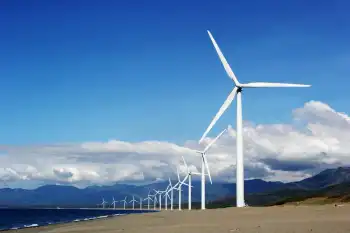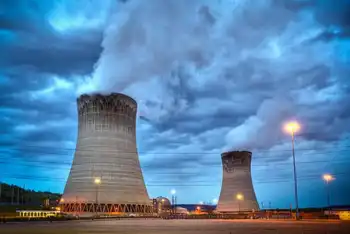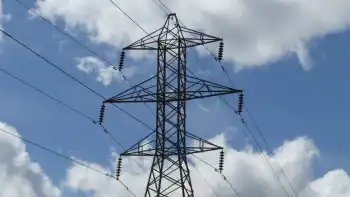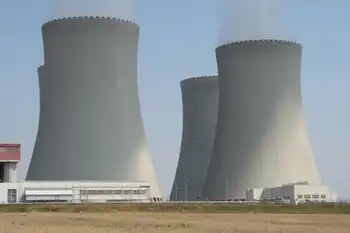Study Questions Prospects for Much Lower Emissions
A Path to Reduced Emissions Electric power companies, which emit about one-third of AmericaÂ’s global warming gases, could reduce their emissions to below the levels of 1990, but that would take about 20 years, no matter how much the utilities spend, according to a new industry study.
The report, prepared by the Electric Power Research Institute, a nonprofit consortium, is portrayed as highly optimistic by its authors, who presented the findings at a recent energy conference in Houston.
It assumes that “money grows on trees and all research is successful,” said one of them, Bryan J. Hannegan. “This is as good as we think we can get, right now.”
Before joining the research institute last year, Dr. Hannegan, a climate scientist, worked as an environmental and economic adviser to the White House and on the Republican staff of the Senate Energy Committee, where he helped draft the 2005 energy bill.
His detailed new analysis comes as Democrats in Congress are promising to draft tough new targets for emissions of greenhouse gases, possibly including mandatory caps, which the Bush administration and industry groups have opposed in the past.
The 1990 Kyoto Protocol on climate change, which the Bush administration declined to support in 2001, calls for emissions from large industrial nations to be below 1990 levels by about the year 2010.
In an interview, Dr. Hannegan said that cutting carbon dioxide that much would mean pursuing every option, including energy efficiency, zero-carbon wind and sun power; new nuclear reactors; coal plants that capture and sequester their carbon; and even plug-in hybrid electric cars, which would require making more electricity but would reduce carbon dioxide and save gasoline.
At the Natural Resources Defense Council, David G. Hawkins, an energy and climate expert, said that the industry groupÂ’s projections would not provide the necessary savings soon enough.
“We think the efficiency, renewables and carbon dioxide capture wedges can all be bigger,” Mr. Hawkins said. He added that whatever overall reduction was achieved in carbon output, the electric sector would have to exceed the average, because it had greater potential than industry or transportation to reduce emissions.
But he said it was not clear that the country could build as many nuclear reactors as the research instituteÂ’s outline called for, at least not without solving problems with nuclear waste and fear of proliferation.
The industry study calls for 64 gigawatts of additional nuclear power by 2030, an increase of about two-thirds from the current level. For the first time in three decades, several companies have expressed interest recently in ordering new reactors, but they will probably take nearly 10 years to build and experts expect no more than six or eight in the first round.
The studyÂ’s figure implies a net increase of about 50 new reactors by 2030; the Energy Department is counting on about 10.
The study also calls for cutting the growth in demand for electricity, which the Energy Department expects to increase at 1.5 percent a year. The study assumes growth of just 1.1 percent a year, which implies a steady decline in electricity use for each unit of economic production.
It also calls for vast growth in wind energy and some solar energy. Renewable energy (leaving out hydroelectricity) now comes to only a little over 2 percent of kilowatt-hours generated; by 2030, it would be 6.7 percent.
The biggest slice, though, is from coal plants that would capture their carbon dioxide, compress it and pipe it underground for sequestration. This is a technology that has been barely demonstrated at this point. But in a little over 20 years, it would have to produce 14.6 percent of electricity supplies.
The technologies required do exist, at least at laboratory scale. But the study does not predict costs and stipulate what is economically feasible.
Many of the changes forecast by the utility group depend on prices and on consumer attitudes. For example, it projects that 10 percent of new vehicle sales by 2017 will be plug-in hybrids, which would carry enough batteries to run a car for the first 20 or 30 miles daily; on days when a motorist went farther, the fuel would be gasoline.
There are no commercially available batteries for that task, however, and hybrids sold today constitute a tiny fraction of the market.
The study counts on upgrading existing coal plants, to make them more efficient. But refurbishing old plants might not be as effective as replacing them, Mr. Hawkins said.
Older coal plants now in service are typically about 33 percent efficient, meaning that two-thirds of the energy in the coal is lost in the generating process. The study sets a target of 49 percent efficiency by 2030.
Jeff Sterba, the chairman of the industry research group and the chief executive of PNM, the parent company of Public Service of New Mexico, presented the study at a recent conference organized by the consulting firm Cambridge Energy Research Associates.
Related News
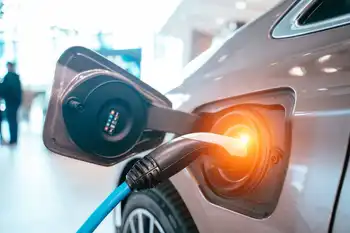
How Alberta’s lithium-laced oil fields can fuel the electric vehicle revolution
CALGARY - After a most difficult several months, Canadians are cautiously emerging from their COVID-19 isolation and confronting a struggling economy.
There’s a growing consensus that we need to build back better from COVID-19. Instead of shoring up the old economy as we did following the 2008 financial crisis, we need to make strategic investments today that will prepare Canada for tomorrow’s economy.
Tomorrow’s energy system will look very different from today’s — and that tomorrow is coming quickly. The assets of today’s energy economy can help build and launch the new industries required for a low-carbon future. And…


